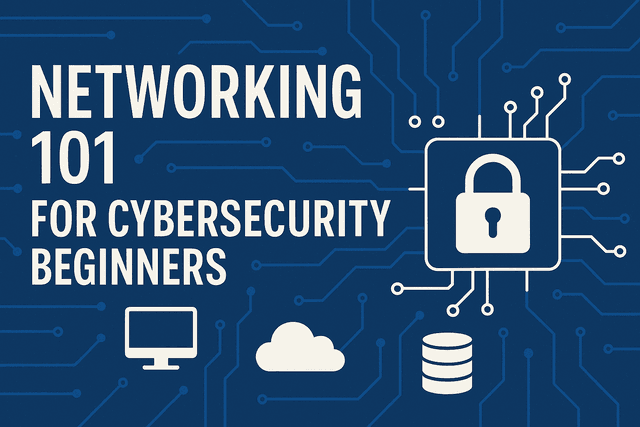Top 10 Cyber Attacks Explained with Real-World Examples

Cyberattacks are growing in scale, complexity, and impact. From small businesses to global enterprises, no one is immune. Understanding the most common types of cyberattacks—and how they work—is critical for both cybersecurity professionals and everyday users.
This guide breaks down 10 of the most prevalent cyberattacks, complete with real-world examples and best practices to mitigate risk.
1. Phishing Attacks
Phishing involves tricking individuals into revealing sensitive information (like passwords or credit card numbers) via fake emails, messages, or websites that appear legitimate.
Real Example:
In 2020, Twitter experienced a high-profile phishing attack where hackers targeted employees with social engineering. Attackers gained access to internal tools, taking over major accounts (e.g., Elon Musk, Apple) to promote a Bitcoin scam.
Prevention:
- Employee training
- Email filters
- Multi-factor authentication (MFA)
2. Malware
Malware (malicious software) includes viruses, trojans, spyware, and worms that infect systems to steal data, damage files, or disrupt operations.
Real Example:
The WannaCry ransomware attack (2017) affected over 200,000 computers worldwide, exploiting a Windows vulnerability to encrypt data and demand Bitcoin ransoms. It crippled the UK's NHS and numerous corporations globally.
Prevention:
- Regular system patching
- Antivirus software
- Network segmentation
3. Ransomware
Ransomware encrypts data and demands a ransom for its release. This form of malware is particularly destructive for businesses and governments.
Real Example:
In 2021, Colonial Pipeline was forced to shut down operations after a ransomware attack disrupted fuel supplies across the U.S. East Coast. The company paid $4.4 million in Bitcoin to regain access.
Prevention:
- Offline backups
- Security awareness
- Zero-trust architecture
4. Credential Stuffing
Attackers use leaked or stolen usernames and passwords from one breach to gain access to other accounts, relying on password reuse.
Real Example:
In the 2019 Dunkin' Donuts breach, attackers used credential stuffing techniques to access customer loyalty accounts, exposing rewards and personal data.
Prevention:
- Use of unique passwords
- MFA enforcement
- Login rate-limiting and IP monitoring
5. SQL Injection
An SQL injection occurs when malicious code is inserted into a database query via input fields, allowing attackers to view or manipulate data.
Real Example:
The 2012 LinkedIn breach involved an SQL injection vulnerability that allowed hackers to steal over 100 million user credentials.
Prevention:
- Input validation and sanitization
- Use of parameterized queries
- Web application firewalls (WAFs)
6. Distributed Denial of Service (DDoS)
A DDoS attack overwhelms a server or network with traffic, rendering it unusable.
Real Example:
In 2016, the Mirai botnet brought down major websites (Netflix, Twitter, Reddit) by infecting IoT devices and launching one of the largest DDoS attacks ever recorded.
Prevention:
- Traffic filtering
- Cloud-based DDoS protection
- Load balancing
7. Insider Threats
An insider threat involves someone within the organization—employee or contractor—intentionally or unintentionally compromising security.
Real Example:
In 2013, Edward Snowden, a contractor for the NSA, leaked classified documents, exposing government surveillance programs.
Prevention:
- Access control policies
- User activity monitoring
- Least privilege principle
8. Zero-Day Exploits
A zero-day exploit targets an undisclosed or unpatched vulnerability, giving attackers an advantage before developers can fix the issue.
Real Example:
In 2021, Microsoft Exchange Server zero-day vulnerabilities were exploited by threat actors to gain access to emails and administrative privileges across thousands of organizations.
Prevention:
- Patch management
- Threat intelligence monitoring
- Endpoint detection and response (EDR)
9. Man-in-the-Middle (MitM)
An attacker intercepts and potentially alters communications between two parties without their knowing.
Real Example:
In unsecured public Wi-Fi networks, attackers can use MitM techniques to eavesdrop on user data. For instance, in 2017, attackers exploited hotel Wi-Fi networks across Europe to spy on guests.
Prevention:
- Use of HTTPS and VPNs
- Avoiding public Wi-Fi without protection
- Strong encryption protocols
10. Social Engineering
Social engineering manipulates individuals into divulging confidential information or performing actions that compromise security.
Real Example:
In 2011, RSA Security was breached through a phishing email with a malicious Excel attachment, leading to a multi-stage attack targeting defense contractors.
Prevention:
- Ongoing user training
- Simulation exercises
- Verification protocols
How to Reduce the Impact of Cyber Attacks
Organizations can reduce cyber risk by:
- Understanding threat vectors
- Implementing layered defenses
- Adopting security frameworks (e.g., NIST, ISO 27001)
- Regularly testing incident response plans
Conclusion
Cyber threats are constantly evolving, but knowledge remains the first line of defense. By understanding common attack types and analyzing real-world incidents, organizations and individuals alike can take meaningful steps to strengthen their cyber resilience.
Regular updates, user education, strong access control, and proactive monitoring can significantly reduce both the likelihood and the impact of attacks.


